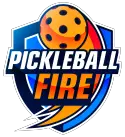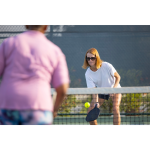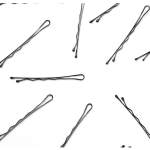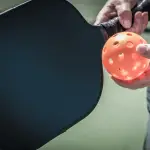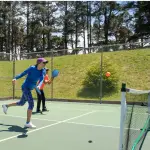Today, we explore the incredible connection between the mind and body to help you level up your pickleball game. Qigong Master Lee Holden is here to discuss how this ancient Chinese practice can improve your pickleball performance both physically and mentally. So, if you’re looking for ways to get in the zone more often and unlock your true potential on the court, this episode is for you.
Mentioned in the Show
Holden Qigong Website: www.holdenqigong.com
PBS Show “Your Fountain of Youth”: https://www.pbs.org/show/your-fountain-youth-lee-holden/
Show Notes
- The importance of spine mobility in Qigong
- Stagnation of energy results in discomfort and stiffness.
- Moving the body in different directions helps maintain flexibility and range of motion.
- Qigong exercises help “oil the joints” and prevent stiffness.
- The origin of the Qigong exercise “Knocking on the Door of Life”
- Named after a pressure point in the lower back called “Life Gate” or Ming Men.
- This pressure point boosts energy when stimulated.
- Mental benefits of Qigong for athletes
- Qigong helps achieve a flow state or “being in the zone” by connecting the mind and body.
- Reduces tension in the body, improving performance and reaction time.
- Enhances focus and relaxation, leading to better decision-making and execution.
- Qigong resources for beginners
- Lee Holden’s website (holdenqigong.com) offers a variety of Qigong programs, from introductory courses to teacher training.
- In-person workshops in Northern California are also available.
- Introduction to Qigong program
- Covers warm-up, stretching, and flow exercises.
- Helps participants feel energized and refreshed.
This episode of the Pickleball Fire podcast discusses how the practice of Qigong can benefit pickleball players both physically and mentally. Qigong expert Lee Holden shares his knowledge on maintaining spine mobility, achieving a flow state, and improving performance on the court. For those interested in learning more about Qigong, Holden provides resources on his website and offers in-person workshops in Northern California.

Click Here to Subscribe to the Pickleball Fire Podcast
Transcript
Lynn: Today, I would like to welcome Lee Holden to the Pickleball Fire Podcast. How are you doing today, Lee?
Lee: Lee? Hey, doing great. Thanks so much for having me.
Lynn: Well, I’m excited to have you on, and we’ll get into why that is. But I do normally like to start out the podcast with a little bit about how you heard about pickleball, how you got involved, how long it’s been, and what you like about it.
Lee: Okay. Well, pickleball kind of found me. I was at my brother’s house, and he turned his basketball court into a pickleball court, and I was like, “Oh, this looks like fun. It looks like a cross between ping pong and tennis.” So we started playing, and it was quite addicting. I mean, I was like, “Hey brother, can we come over and play pickleball again?” So I loved it. I thought it was great. It had a great pace to it. I’m an athlete and a game player. So yeah, I thought it was great fun, and it was easy enough to have a good time the first time I played, which isn’t always the case with certain sports.
Lynn: Now, how long have you been playing at this point?
Lee: I’m a fairly new pickleball player. I would say I’ve played maybe 10 games in my life.
Lynn: Okay, so that brings up a good point. Why am I having somebody on the Pickleball Fire podcast who’s really played very little pickleball, maybe 10 games, and there is actually a really good reason for it. Lee is actually a master of Qigong. So Lee, let me first start asking you, what is that?
Lee: That is a great question. What is Qigong, and how do you spell it? Most people don’t realize this, but Qigong is one of the oldest and most practiced exercise forms in the world today. Right now, in these modern times, about 50 to 80 million people practice Qigong each and every day.
So, it is one of the most popular forms of exercise. It’s a practice that’s four or 5,000 years old. It comes from ancient China, and it’s part of Chinese medicine. More people have heard of Tai Chi, and what people don’t realize is that Tai Chi is a form of Qigong, and Qi, which is spelled “Qi,” means life force energy or just energy, and Gong means to work with. So, we’re doing exercises to work with our life force energy, and that can be anything from our physical fitness to breathing practices to stretching, to body conditioning and moving meditation. What it looks like is these beautiful flowing movements where people are in the park and sort of communing with nature. And I think what a lot of Westerners think is sometimes, “Oh, maybe this isn’t for me, that’s for older people in the park.” And that’s just not true because if we want less stress and more energy and flexibility and clearing pain and activating our body’s natural healing power, this practice is for you.
Lynn: And that fits in really nicely with pickleball because one of the aspects of the game is that it does tend to be very addictive. So there are a couple of things that result from that, which is that you go out and play for 2, 3, 4 hours. You get home, you’re tired, and then you also, every once in a while, could have some injuries, especially if you’re a little bit older like I am actually playing the game. So how does Qigong kind of help that aspect of the pickleball game?
Lee: I think it’s a great compliment because you go out and play a pickleball game afterwards. What you want to do is clear any aches and pains, stretch your body out, get energy to circulate for recovery, and it’s kind of the balance to athletics. I teach Qigong to athletes, whether it’s golfers, competitive basketball players. I used to teach a lot to even professional athletes and Olympic athletes, and what it helped people do, whether you’re a professional or a weekend warrior, it just helps you recover, regain your energy, and stay balanced. And it has so much to offer. I think especially like sports like pickleball where it’s fast-paced and it’s so quick that to stretch the body out to get into a nice flow state or moving meditation will really help to balance the mind and the body.
Lynn: So I’m curious as to, do you actually recommend doing some Qigong as a part of your warm-up routine?
Lynn: It sounds like it might fit in really well.
Lee: Oh, it’s a great warm-up. Yeah, so what I would recommend is a nice Qigong warm-up before playing pickleball. Then your body’s nice and loose and warm. That’s really important. The newest and latest exercise science is that you don’t stretch real deeply before games. So you warm up, you play your sport, and you stretch afterwards. That’s kind of how I would use the Qigong practice. Take the Qigong warm-ups, use them to get your body loose. And sometime afterwards, let’s say if you play pickleball during the day and that evening, you just do your nice stretch and relaxation and flows with your Qigong practice, and you’re gonna feel not only physically fit but also mentally and emotionally balanced, as well as having high levels of energy.
Lynn: It sounds like it has a lot of benefits. And I’ve just recently had on a number of fitness experts, and of course, they suggest a fairly lengthy warm-up, which you really don’t see a lot at the courts. And I don’t even think people do it much at their home right before they actually get to the court. So what would that Qigong warm-up look like? And in terms of the amount of time it would take, what’s kind of the minimum requirement you think for it to be beneficial?
Lee: Yeah, that’s great. And I think it only has to take a few minutes. Like before the game, because people are usually rallying around as another part of their warm-up, I would say, you just want to loosen up the joints and get the muscles warmed up. So ideally, it’s about 10 to 15 minutes of warming up. But really, if you wanted to take and do three to five minutes of Qigong before a game before playing, you’re gonna feel a lot looser, and you’re gonna have more range of motion in your joints. You’re just gonna overall perform better.
Lynn: And then is there, I know this is a podcast, but is there a way to describe what would be involved in that five-minute warm-up?
Lee: Oh, absolutely. There are a couple of exercises. One I like is the spinal kind of enlivening exercise. It’s called spinal cord breathing.
And if people wanted to try it, even while they’re seated in their chair we could all try it together. Just don’t do it. If you’re driving your car, folks. But maybe what I could do is just describe it and you basically put your hands in a light loose fist by your shoulders, and then you’re just gonna look up and open your chest.
And that’s our deep breath. You inhale, and then when you exhale, you’re gonna bring your chin down to your chest. Your elbows and your forearms come together and you round your back and then you inhale. You open your chest, you exhale, and you round your back. And notice how that moves all the joints in your spine.
And that’s what we wanna do. We want to create mobility in our spine and for, I would say a pickleball, you would wanna create that mobility in your spine, and then the mobility in your, especially your shoulders, elbows, and wrists.
Lynn: Now you said not to do this in a car. I guess that’s because you need to have both hands on the wheel.
Lee: Correct. Both hands on the wheel and eyes on the road. And if, when you bring your chin down to your chest, you’re not looking at the road. Exactly.
Lynn: And so you recommend a, that exercise, which is the spinal cord breathing, is there another one you recommend as part of a warmup?
Lee: Yeah, I would say another one is called Knocking on the Door of Life.
And this is an interesting one because you’re gonna be stimulating some key pressure points that will give you energy. So what you do is you, this one’s done better standing. So if people wanted to do it standing, you just stand with your feet about shoulder width, and you turn from your hips and your waist, and you let your arms knock across your lower back and around your rib cages.
So you’re actually. Slapping onto the body as you twist, and that gives your spine another range of motion. So the interesting thing about our spines is that they can move in six different directions. That’s twist, left, twist right? Like a forward flexion and a back extension that was spinal cord breathing that we just did.
And then also you can side bend left and right and with all the different joints from the cervical spine to the thoracic to the lumbar. Each six direction with all those different joints makes the spine move in about a hundred different ways.
And what happens is if we don’t move the spine in all of its different directions, what we call in Chiang is that we get stagnation of energy.
And what that means for you. Stagnation of energy is where you just feel discomfort. You’re like, oh, my neck and shoulders are tight, or I got low back pain. I got this little ache or tension spot. That’s where the energy is getting stagnant or there’s not enough blood flow there. And it’s basically use it or lose it.
If we don’t move the body in all its different directions, we get lack of range, emotion and stiffness. And so these exercises help you to what we call oil your joints. So we don’t feel like we’re getting older or tighter and stiffer because we’re moving the body in all the ways it’s designed to. You could just look at, let’s say a diagnosis like frozen shoulder.
Somebody injures their shoulder, they put it in a sling, and if you don’t move your shoulder after about 10 days to three weeks, even if that injury is completely gone, you now have frozen shoulder. You can’t move that arm only because you didn’t move it. In its range of motion. Now our spine is similar, like if you don’t move it, you are just gonna get stiffness and tension.
So what I tell people is that you’re not getting older and getting less flexible and tighter and more pain just because you’re getting older. It’s that we get older and we stop moving. Kids and teenagers and young adults are just moving more often than we are. And if we don’t move, we get tightness.
Stiffness or what I called stagnation.
Lynn: And I really like the name of that exercise. And I think I saw you do it on a video and again, it’s called Knocking on the Door of Life. I’m curious as to, do you know how that, how it came to be named that?
Lee: Yeah. Oh yes, I do. I know exactly how there is a pressure point right around your lower back and it’s called Life Gate.
Ming man in Chinese Ming man means life gate. And when you knock on it, it gives you energy. So let’s say an acupuncturist, if somebody said somebody came in to see them and they said, oh man, I’m so fatigued. I’m tired. I don’t have enough energy to get through the day, they would do acupuncture on that point to help them boost their energy.
Lynn: All right. Well, so far we’ve talked mostly about the physical benefits of Qigong, but I believe there’s also a mental aspect that can help you in general, but certainly also on the court. And from what you had said, you had worked with a lot of very high-level athletes. So were they using Qigong to also help their mental aspect of their game?
Lee: Oh yeah, absolutely. I mean, for high-level athletics and peak performance, the mind is so key, and mind and body. It’s really interesting because we have this misunderstanding that the mind and the body are separate when it’s one continuous flow. The latest science finds neurological activity in the heart, in the gut, and in the immune system, which previously we just thought neurological activity was only for the brain and nervous system, which is now understood that this isn’t the case. So we have a thinking body, and when our mind is clear and relaxed, we’re gonna perform better. If we’re stressed, frustrated, or agitated, we’re gonna perform less optimally. So as we do our Qigong practices, it’s like a moving meditation where your mind gets really calm, really clear, and the whole goal of Qigong practice is to get into the flow. Now, athletes would call this being in the zone, and when you’re in the zone, you just feel like every shot is going exactly where you want it to go. You’re playing at your best level to your ability. And so this has a lot to do with our mental focus.
Lynn: Right. And my background when I was going through graduate school was actually peak performance sports psychology. And getting into that flow state was one of my favorite topics that I would certainly teach in class and always as an athlete try and achieve. So how is it that Qigong helps you to do that? Is it and how much, what does it take, and kind of what fosters that from Qigong?
Lee: Yeah, and I think it’s a combination of things. And it’s interesting. One is less tension in your body because when you’re restricted, your body doesn’t all work cohesively. And so in Qigong practice, we train flow state very directly by moving with relaxation. And this is an interesting theme because most athletics don’t talk about relaxation. Relaxation is sort of something that happens when you get really skilled at your sport. It’s like you can be, let’s say, on a big wave as a surfer, and you could be totally relaxed. And by being relaxed, your body expresses the energy of the environment or the wave around you. Now for racket sports, when you’re relaxed, your body can move from the center, you can move cohesively.
You can move without thinking because as soon as you’re trying to think about something, your body has to go through a process that creates a disruption. And so flow state happens when your energy’s up, you feel a deep connection to the activity that you’re doing. And you feel a oneness with your surroundings or a oneness with your, with the ball, the racket and your body.
And when that happens, it is so much fun because you’re just in that flow. And that’s kind of what athletes I think, are looking for that makes everything so much fun and makes it all so cohesive and connected.
Lynn: Right. And I think a lot of pickleball players and athletes in general have so much going on in their head that it’s hard to play without thinking.
So anything that gives you the opportunity to be able to do that more often is gonna benefit your game so much. And if you’re not thinking, you’re also. Probably really significantly increasing your reaction time, which is absolutely so important in pickleball when you’re up at that non volley zone and when you’re kind of in those hands battles, there’s speed up rallies.
Lee:
Oh man, it just seems like, especially for pickleball, because the reaction and the. When you’re right there at the net, you just can’t really think. You just have to respond to what’s going on around you. And if your body’s loose and your joints are more flexible and you got energy circulating, it’s just gonna create that quicker reaction time.
Lynn: Now if somebody is actually interested in learning more about Chiang I would imagine that there’s a pathway and some resources that can help ‘
Lee: em out. You know what, that’s exactly what I do. I have resources and pathways all all kind of outlined on my website@holdenqigong.com and Qigong is spelled Q I G O N G.
And we have a great introductory program. I have Qigong for upper back and neck. I have a 30 day challenge all the way up to, let’s say, a teacher training.
Lynn: Wow. So you really are a master of Qigong
Lee: That’s right. I’ve done maybe 15 trips to Asia. I’ve learned from the masters, and then I’ve had seven or eight national television shows on public television, on Qigong, on the topic, and I’ve just, I just made it my life mission to be able to teach these.
These beautiful practices from Eastern Wisdom traditions to Westerners in very applicable ways so that you know they can use it for their lives.
Lynn: And as you said, you’ve got a lot of resources on your website. Do you also teach in person just outta curiosity?
Lee: I do. I have a in-person workshop coming up this spring, this summer, this fall here in Northern California at a beautiful retreat center called 1440.
So I’m super excited because this will be our first retreat since since the pandemic.
Lynn: Nice. And where are, is that in Northern California?
Lee: That is in Santa Cruz, California.
Lynn: Oh, beautiful area. I grew up in California, so I’m familiar.
Lee: Oh, you did? Oh yeah. Isn’t the Santa Cruz, it’s like you got the Redwood Forest and you got the beach, so it’s hard to beat.
Lynn: Now I would imagine most people who are interested in Qigong will probably go to your website and they’ll start off with maybe kind of the intro. So what’s involved in the intro program?
Lee: Oh, the intro program are a lot of exercises, just like I was talking about. It’ll take you through my protocol, which is warm up, strengthen.
Activate energy, stretch muscles that are tight, what we call lines of tension, and then go into flowing movement practices. So in that intro, you’re gonna get warm up, stretch and flow, and by the end you just feel amazing. I just encourage people, give it a try, see what it’s like for yourself and it can be quite elevating and quite addicting in the positive sense that you just want more of it.
Lynn: All right. Well, I’m so happy to have had you on the podcast today. It’s almost like the last few podcasts. I feel like I’m doing kind of a mind body series, which wasn’t necessarily intentional, but I think Chiang is such a great fit can help us so much just in our lives in general, but also on the court, which is very important to most pickleball players.
Lee:
Absolutely. And I love it, and you got me motivated to go play more pickleball and I’m gonna use my Qigong warmup and I’ll let you know how good I get. If I start turning pro in just a few weeks, you’ll know this Qigong stuff really works.
Lynn: That is awesome. Please let me know. I sure will. All right, well thank you so much Lee.
I really appreciate you being on the Pickleball Fire podcast
Lee: today. I appreciate it. Great to talk with you.
